11 Mile Fishing Report: A Comprehensive Guide to Fishing in Colorado’s High Country
11 Mile Fishing Report: A Comprehensive Guide for Anglers
If you’re an avid angler looking for your next fishing adventure, then 11 Mile Reservoir is the place to be. Located in the heart of Park County, Colorado, this 3,400-acre reservoir offers some of the best fishing opportunities in the state. The reservoir is surrounded by beautiful mountains, making it an ideal spot for fishing, boating, and camping. In this article, we will give you a comprehensive guide on everything you need to know about fishing at 11 Mile Reservoir.
Firstly, let’s talk about the fish you can expect to catch at 11 Mile Reservoir. The reservoir is home to different species of fish, making it an ideal spot for anglers with varying tastes. Rainbow trout, brown trout, kokanee salmon, and northern pike are some of the popular fish that can be found in the reservoir. The reservoir is known for its trophy trout, and the state record for rainbow trout was caught here.
At 11 Mile Reservoir, you can fish from the shoreline or by boat. There are two main boat ramps, Witcher’s Cove and North Shore. Both ramps provide easy access to the reservoir. If you don’t have a boat, there are rentals available at the marina. We recommend renting a boat to access the deeper water where the bigger fish swim.
For fly fishing enthusiasts, there are areas designated specifically for fly fishing. The reservoir has two designated areas for nymph and dry fly fishing. If you’re looking to catch some trophy-sized fish, we recommend using streamers or leech patterns, especially during low light conditions.
Now, let’s talk about the best time to fish at 11 Mile Reservoir. Fishing at the reservoir is good year-round, but the ideal time to go fishing is during the warmer months, from May to November. During this time, the water temperature is more comfortable, and the fish are more active. Early morning and late afternoon are the best times of the day to fish.
When it comes to bait and lures, there are many options available. PowerBait, nightcrawlers, and salmon eggs are some of the popular baits used at the reservoir. For lures, you can use spoons, spinners, and crankbaits. We recommend changing up your bait or lure to see what works best for the day and conditions.
Lastly, let’s talk about fishing regulations at 11 Mile Reservoir. There are daily bag and possession limits for each fish species, and it’s important to know these limits before you start fishing. The state of Colorado requires all anglers to have a valid fishing license, and make sure you have the right gear and equipment before you go out on the water.
In conclusion, 11 Mile Reservoir is a beautiful place to fish and explore. It’s a must-visit destination for any angler who wants to experience some of the best fishing opportunities in Colorado. We hope this comprehensive guide provides you with all the information you need to plan your next fishing adventure at 11 Mile Reservoir.
Location of 11 Mile Reservoir
11 Mile Reservoir is a picturesque body of water situated near the base of Pikes Peak, one of the most famous landmarks in Colorado. It is located in Park County, about 11 miles south of Lake George and 44 miles west of Colorado Springs. The reservoir is nestled between the rolling hills and valleys of the Pike National Forest and forms a part of the South Platte River Basin. The nearest town to 11 Mile Reservoir is Hartsel, which is approximately 20 miles away.
If you’re planning a visit to 11 Mile Reservoir, the quickest route to get there from Colorado Springs is to take the US-24 W highway. Follow this road until you reach Lake George, then turn right onto Park County Road 92. Continue driving for approximately 11 miles and you’ll see the reservoir on your right-hand side. Alternatively, if you’re coming from Denver, you can take the US-285 S highway and follow the same directions to reach 11 Mile Reservoir.
The journey to the reservoir is scenic, with breathtaking vistas of the surrounding mountains and valleys as you drive through Pike National Forest. Visitors who want to enjoy the Colorado scenery can also take the scenic route via the US-24 W and CO-67 S highways, which offers even more fantastic views of the surrounding landscape. The road to the reservoir is well-maintained, and visitors can drive to the various locations around the lake with ease.
Once you reach 11 Mile Reservoir, you’ll find several parking areas and designated fishing spots dotting the shoreline. The Colorado Division of Wildlife oversees the management of the reservoir’s fisheries. The reservoir is stocked regularly with a variety of fish species, including rainbow trout, kokanee salmon, and cutthroat trout. The designated fishing spots offer anglers plenty of opportunities to reel in a big catch, and many visitors flock here each year to enjoy the challenging and exciting fishing experience.
In summary, 11 Mile Reservoir is a jewel nestled in the heart of Colorado’s Pike National Forest. Its scenic beauty, diverse fish population, and easy accessibility make it one of the most popular fishing spots in Colorado. So, pack your fishing gear, hit the road, and spend a day or two soaking in the tranquil ambiance of this beautiful lake.
Fishing Species in 11 Mile Reservoir
If you’re planning to fish in 11 Mile Reservoir, it’s important to know the different fish species that you might encounter. From rainbow trout to kokanee salmon, the reservoir offers a diverse fishing experience for all anglers.
Rainbow Trout
Rainbow trout is the most prevalent fish species in 11 Mile Reservoir. They are a popular target for anglers because of their fighting spirit and delicious taste. The average size of rainbow trouts in the reservoir is around 12-16 inches, but larger ones can be caught occasionally. If you’re fishing for rainbow trout, try using bait such as nightcrawlers or salmon eggs.
Kokanee Salmon
Kokanee salmon is another species that you can find in 11 Mile Reservoir. They are a bit more challenging to catch compared to rainbow trout because they are more selective in their feeding habits. Try using lures such as spoons or spinners and target depths between 20 to 40 feet. The average size of kokanee salmon in the reservoir is around 12-14 inches.
Brown Trout
Brown trout can also be found in 11 Mile Reservoir, although they are less common compared to rainbow trout and kokanee salmon. They are more solitary and prefer deep water areas. The average size of brown trout in the reservoir is around 14-18 inches.
Cutthroat Trout
Cutthroat trout is a relatively rare species in 11 Mile Reservoir, but they can still be caught by anglers who know where to look. They are more commonly found in the colder, upper sections of the reservoir. The average size of cutthroat trout in the reservoir is around 10-12 inches.
Yellow Perch
Yellow perch is another species that you can find in 11 Mile Reservoir. They are more commonly found in the shallower areas of the reservoir, and they tend to school together. The average size of yellow perch in the reservoir is around 7-9 inches. They are known for their delicate but flaky meat, which makes them a popular target for panfish anglers.
Lake Trout
Lake trout is a large fish species that can be found in the deeper parts of 11 Mile Reservoir. They are known for their predatory behavior and feeding habits. If you’re fishing for lake trout, try using large lures or jigs and target depths between 40 to 60 feet. The average size of lake trout in the reservoir is around 20-25 inches.
Smallmouth Bass
Smallmouth bass is a non-native species that was introduced to 11 Mile Reservoir in the past. They are more commonly found in the upper sections of the reservoir, and they can be caught using various lures or baits. The average size of smallmouth bass in the reservoir is around 10-14 inches.
Pike
Pike is another non-native species that can be found in 11 Mile Reservoir. They are known for their predatory behavior and feeding habits. If you’re fishing for pike, try using large lures or baitfish and target areas with weeds or structure. The average size of pike in the reservoir is around 18-22 inches.
Channel Catfish
Channel catfish is a species that was introduced to 11 Mile Reservoir in the past. They are more commonly found in the lower sections of the reservoir, and they can be caught using various baits such as chicken liver or stinkbait. The average size of channel catfish in the reservoir is around 12-16 inches.
Other Species
Aside from the species mentioned above, there are also other fish species that you might encounter in 11 Mile Reservoir such as lake whitefish, suckers, and carp. Although they are less popular among anglers, they can still provide a fun fishing experience.
Knowing the different fish species that you can catch in 11 Mile Reservoir can help you prepare better for your fishing trip. Always remember to follow the fishing regulations and practice catch-and-release whenever possible to help preserve the fish population.
Water Temperature
The water temperature at 11 Mile Reservoir is currently averaging around 58°F (14.4°C), with some areas experiencing slightly cooler or warmer temperatures. This is a comfortable temperature for most fish species and is conducive to active feeding behavior. As the summer months progress, the water temperature is likely to increase slightly, but it should remain within a relatively narrow range.
Weather Conditions
The weather conditions at 11 Mile Reservoir can vary significantly depending on the time of year and the prevailing weather patterns. Currently, the area is experiencing mild temperatures with occasional afternoon thunderstorms. Anglers can expect temperatures to range from the mid-60s to low 80s (°F) throughout the day, with cool evenings in the 50s. It’s always a good idea to check the weather forecast before heading out to the reservoir to make sure that you’re prepared for any potential changes in conditions.
Fish Activity
The fish activity at 11 Mile Reservoir is currently quite good, with a variety of species available to anglers. Rainbow trout, brown trout, kokanee salmon, and pike are all common catches at the reservoir. The cooler water temperatures and relatively stable conditions have kept the fish active and feeding throughout the day. Most trout species can be caught using a variety of methods, including trolling with lures or bait, casting with spoons or spinners, and fly fishing with nymphs or streamers. Pike tend to be caught on larger lures or bait, and kokanee salmon can be targeted using downriggers or other trolling methods.
Water Level
The water level at 11 Mile Reservoir is currently at about 90% of capacity, which is a good level for fishing. Some areas may be slightly more or less shallow, depending on recent precipitation or runoff. Anglers should be aware of any submerged hazards or structures, such as rocks or trees, that could cause problems while boating or fishing. The water level is expected to remain relatively stable throughout the summer months, barring any significant weather events.
Recommended Baits and Lures
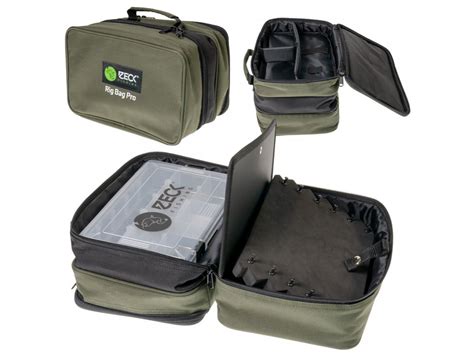
Fishing at the 11 Mile Reservoir can be a challenging and exciting experience. The key to a successful catch is choosing the right bait and lure that match the fish species present in the water and the current conditions. Here are some of the most recommended baits and lures that you can use:
1. PowerBait
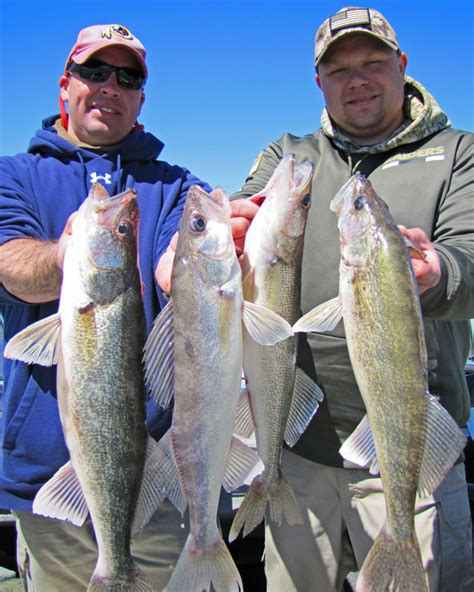
PowerBait by Berkley is a popular fishing bait that can be used for different fish species such as trout, salmon, and catfish. This dough-like bait comes in different bright colors that attract the fish, making it easier to catch. It is also great for fishing in still waters, making it a perfect choice when fishing at the 11 Mile Reservoir.
2. Jigs
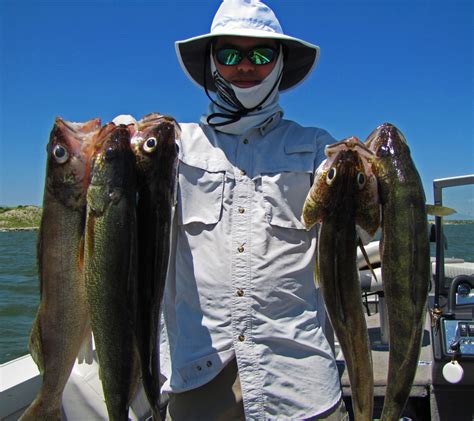
Jigs are versatile lures that can be used for a variety of fish species such as walleyes, bass, and crappies. They come in various shapes, patterns, and colors that mimic the movement of real baitfish, making them irresistible to predators. You can cast and retrieve them in different depths, making them ideal for fishing at different areas of the reservoir.
3. Spinners

Spinners are lures that have one or two small metallic blades that spin as you retrieve them through the water. They come in different shapes, colors, and sizes that make them attractive to different fish species, especially trout and bass. You can adjust the speed of retrieval to match the water current and the fish behavior.
4. Rapala Lures
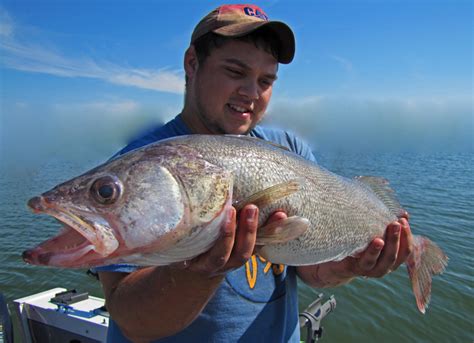
Rapala Lures are multi-species lures that can be used for fishing at the 11 Mile Reservoir. They have a natural swimming action and life-like patterns that make them effective for catching fish such as trout, pike, and walleyes. They are also easy to use and can be cast or trolled in different depths.
5. Nightcrawlers
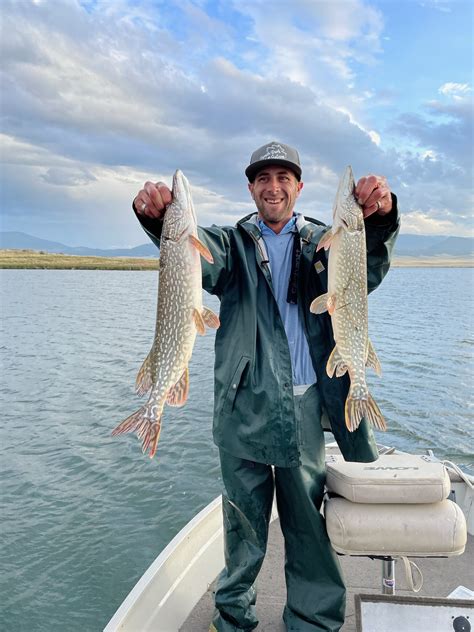
Nightcrawlers are among the most popular live baits used for fishing. They are effective for catching different fish species such as catfish, bass, and trout. They can be hooked alone or used with other lures such as spinners or jigs. You can also adjust the depth of the bait to match the fish’s feeding behavior.
In conclusion, the choice of bait and lure depends on the fish species you intend to catch, water depth, and current conditions. Always remember that fishing at the 11 Mile Reservoir requires patience, skill, and the right equipment to guarantee a successful and enjoyable fishing experience.
Choosing the Right Bait
Choosing the right bait can make all the difference when it comes to catching fish at 11 mile Reservoir. Experienced anglers suggest using live bait such as worms, minnows or leeches. Remember to bring a variety of bait to increase your chances of success. Fish will often be attracted to different kinds of bait depending on the time of day and the season. Therefore, it is important to be prepared with different options on hand.
While live bait is the preferred choice for many anglers, artificial lures can also be successful. The type of lure you choose should depend on the type of fish you are trying to catch. For example, if you are targeting trout, use lures that mimic small insects or baitfish. If you are after larger fish such as pike or walleye, use lures that are larger and more colorful.
It is also important to match the bait or lure to the conditions of the water. If the water is murky, use brightly colored lures that will be visible to fish. If the water is clear, opt for natural looking bait that will blend in with the surroundings.
Lastly, don’t forget to switch up your bait or lure if you are not having any luck. Fish can be picky and may prefer a different kind of bait depending on the day and time.
Regulations and Licensing Requirements
If you are planning a fishing trip to 11 mile reservoir, it is important to understand the regulations and licensing requirements enforced by Colorado Parks and Wildlife (CPW). These regulations are in place to ensure the sustainability and preservation of the fish populations at the reservoir. Violating these rules can result in hefty fines and even the loss of fishing privileges.
To fish at 11 mile reservoir, you must have a valid Colorado fishing license, which can be purchased from any CPW office or authorized license agent. Prices vary depending on your residency status and the duration of the license. A daily fishing pass is also required to access the reservoir and can be purchased at the entrance gate.
As for regulations, the CPW enforces strict catch and release rules for certain species of fish, such as Cutthroat Trout and Kokanee Salmon, which require a special permit to possess. The daily bag limit for Trout is set at four fish, with a minimum size limit of 16 inches. Pike, on the other hand, have a bag limit of ten fish, and there is no minimum size limit.
It is important to note that some areas of the reservoir may have special rules and restrictions enforced by the CPW. These rules are posted at access points and should be read and followed carefully. One such rule is the prohibition of bait fish, crayfish, and salmon eggs. As a result, anglers must use artificial lures, flies, or bait that is specifically made for fishing.
It is recommended that anglers bring a measuring tape or ruler to accurately measure the size of their catch. Any fish that do not meet the minimum size limit must be immediately released back into the water unharmed. Additionally, it is important to properly dispose of any fishing line, hooks, and other gear, as they can harm wildlife and the environment if left on the shore or in the water.
Finally, it is worth noting that the reservoir is open year-round for fishing, but ice-fishing is only allowed in designated areas during the winter months. As seasonal changes can greatly impact fish behavior and availability, it is recommended that anglers check the CPW website for updates and fishing reports before planning a trip.
In conclusion, by understanding and following the regulations and licensing requirements for fishing at 11 mile reservoir, anglers can enjoy a safe and sustainable fishing experience while helping to preserve the reservoir’s unique aquatic ecosystem for future generations.
Nearby Accommodations and Activities
If you’re planning a fishing trip to 11 mile Reservoir, there are plenty of nearby accommodations and activities to keep you busy when you’re not out on the water. Here are some options to consider:
Hotels and Lodges
There are several hotels and lodges located within a short drive of 11 mile Reservoir. The nearby town of Lake George has a few options, including the Lake George Cabins and RV Park, which offers log cabin rentals and RV campsites.
Further south in the town of Woodland Park, you’ll find additional lodging options such as the Country Lodge Motel and the Eagle Fire Lodge & Cabins.
Campgrounds and RV Parks
11 mile Reservoir is known for its excellent camping opportunities, and there are several campgrounds and RV parks located within a short drive of the lake. The 11 Mile State Park Campground is a popular option, with 144 campsites available, as well as cabins for rent.
Other nearby campgrounds include the Happy Meadows Campground and the Lake George RV Park.
Hiking and Mountain Biking
If you’re looking to stretch your legs and explore the great outdoors, the area around 11 mile Reservoir offers plenty of hiking and mountain biking opportunities. The nearby Florissant Fossil Beds National Monument is a popular spot for hiking, with several trails of varying lengths and difficulties.
The Ring the Peak Trail is another popular option for hiking and mountain biking, with a 63-mile loop that offers stunning views of Pikes Peak and the surrounding area.
Wildlife Viewing
The area around 11 mile Reservoir is home to a wide variety of wildlife, including bald eagles, elk, and deer. The nearby Mueller State Park offers excellent opportunities for wildlife viewing, with over 5,000 acres of protected land.
Keep your eyes peeled when you’re out on the water as well – you may spot a bald eagle or osprey fishing in the lake.
Scenic Drives
The area surrounding 11 mile Reservoir is home to some of the most stunning scenery in Colorado, and there are several scenic drives you can take to explore the area. The Gold Belt Tour National Scenic Byway is a popular option, with 131 miles of scenic roads that take you through historic mining towns, scenic canyons, and up to the summit of Pikes Peak.
The Colorado Springs Foothills Scenic Drive is another great option, with a 20-mile loop that offers stunning views of the city and the surrounding mountains.
Whether you’re interested in camping, hiking, or just taking in the beautiful scenery, the area around 11 mile Reservoir has something to offer everyone. So why not plan a trip today and see for yourself?
Conclusion
In conclusion, 11 mile Reservoir is a magnificent fishing destination for anglers of all skill levels. The area is known for its diverse fishery, and you can find a variety of fish such as cutthroat, rainbow, and brown trout, as well as kokanee salmon and pike.
We’ve covered some key points throughout this article, including the best time to fish, the types of bait to use, and the most effective techniques to catch your desired fish. We’ve also discussed the different areas around the reservoir that offer the best fishing experience.
One thing we must caution anglers is to always follow fishing regulations and guidelines. Colorado Parks and Wildlife enforces strict rules, and failure to adhere to them could result in hefty fines or even suspension of your fishing license. Also, please respect the environment and leave no trash behind.
Whether you are a fly fisherman, a lure caster, or a novice angler, 11 Mile Reservoir offers something for everyone. The natural beauty of the area, combined with its impressive fishery, makes it an outdoor paradise.
So, if you are looking for an unforgettable fishing experience, plan your trip to 11 Mile Reservoir and witness the beauty of Colorado’s outdoors for yourself.
 Fish Tank Facts Fish Tank Facts and About Aquarium
Fish Tank Facts Fish Tank Facts and About Aquarium